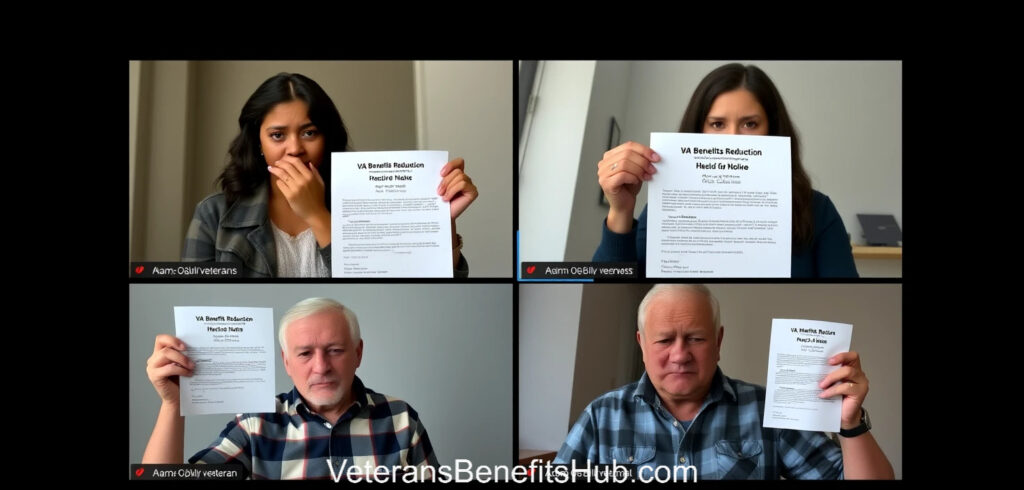
Another 100% P&T Reduction: What Every Veteran Needs to Know
VA Rating Reduction
First, let’s clarify something important: P&T is not a protection. Many veterans mistakenly believe that it is, but unfortunately, it’s not. There are only two real protections: the 10-Year Rule and the 20-Year Rule. Not the 5-Year Rule. Not the 55-Year Rule. Not P&T. We’ll break those down shortly.
The Reduction Letter: A Cautionary Tale

This case revolves around a veteran who recently received a reduction letter—taking him from 100% to 0%. Yes, really. Although the letter itself is riddled with errors (which the VA will likely correct), the major takeaway is this: this veteran is losing P&T status.
Conditions like sinusitis, rhinitis, cervical strain, and PTSD were all under review. PTSD dropped from 30% to 10%. He’s got 10% for rhinitis and 10% for PTSD, but the math clearly doesn’t add up to a full 100% anymore.
The Veteran’s Own Words
“I retired last year after my 20 and my BDD claim went pretty smoothly… The only issue was they didn’t service-connect my sleep apnea, even though I was diagnosed while still on active duty. My VSO advised submitting a Higher-Level Review (HLR). Seemed smart. Spoiler: it wasn’t.”
This veteran was also receiving CRDP (Concurrent Retirement and Disability Pay), so the reduction affects not just his VA comp, but also his retirement benefits—a brutal double whammy.
The Moderator’s Crucial Comment
One of the most important notes in this situation came from a forum moderator:
“For other vets reading, please note: the original poster filed a HLR. The VA did not randomly reduce their rating. This action was triggered by the veteran, not the VA.”
That’s the real key here: this veteran invited scrutiny by submitting a HLR. There were no unprompted exams or random reviews—this was self-initiated, based on poor advice from a VSO.
Don’t File Unless Absolutely Necessary
99.99999% of veterans who are rated P&T should not file additional claims. The only exceptions are very rare and specific scenarios. I won’t even explain those here because they are so niche—and I don’t want anyone misinterpreting this article as encouragement to file more claims.
Was it the VSO’s fault? Probably. But ultimately, only the veteran feels the consequences, and that’s the hard truth. When you go down a dumb road, you often end up at a dumb result. And this case proves that in full.
Understanding the 5, 10, 20, and 55-Year Rules
- 5-Year Rule: No routine future exams if the condition is static, but not a protection.
- 10-Year Rule: After 10 years, your service connection is protected (except in cases of fraud).
- 20-Year Rule: After 20 years, your rating is protected (again, except for fraud).
- 55-Year Rule: If you’re 55 or older, reductions are unlikely, unless there are special circumstances like cancer in remission.
Again, P&T does make it harder for the VA to reduce your ratings—but it’s not a guaranteed protection. If it were, this veteran wouldn’t be facing what he’s going through now.
Bonus: The “Third” Protection
There’s technically a third kind of protection. If rating schedules change, veterans previously rated under the old system may be protected under what’s called “grandfathering.” That word isn’t in the CFR, but it’s a real concept used to safeguard prior ratings. This can apply to conditions like mental health, tinnitus, sleep apnea, and neurological disorders.
Final Thoughts
The VA has reduced another veteran’s benefits—and unfortunately, the veteran triggered it. Submitting a HLR for a non-service-connected condition while already P&T is almost never worth the risk.
Veterans: please, know your rights and understand the system before making moves that could cost you everything you’ve earned.

